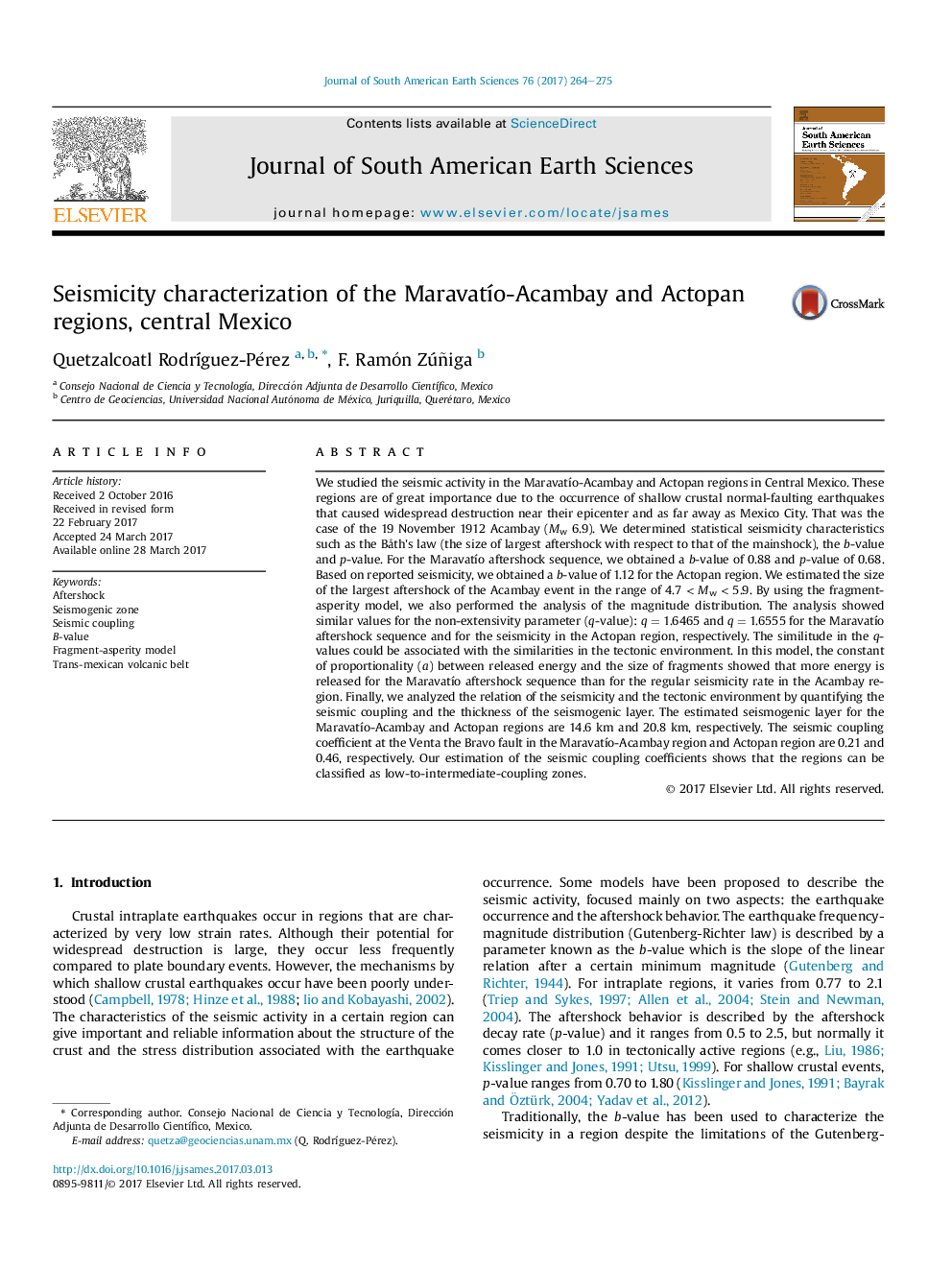| Article ID | Journal | Published Year | Pages | File Type |
|---|---|---|---|---|
| 5780473 | Journal of South American Earth Sciences | 2017 | 12 Pages |
Abstract
We studied the seismic activity in the MaravatÃo-Acambay and Actopan regions in Central Mexico. These regions are of great importance due to the occurrence of shallow crustal normal-faulting earthquakes that caused widespread destruction near their epicenter and as far away as Mexico City. That was the case of the 19 November 1912 Acambay (Mw 6.9). We determined statistical seismicity characteristics such as the BÃ¥th's law (the size of largest aftershock with respect to that of the mainshock), the b-value and p-value. For the MaravatÃo aftershock sequence, we obtained a b-value of 0.88 and p-value of 0.68. Based on reported seismicity, we obtained a b-value of 1.12 for the Actopan region. We estimated the size of the largest aftershock of the Acambay event in the range of 4.7 < Mw < 5.9. By using the fragment-asperity model, we also performed the analysis of the magnitude distribution. The analysis showed similar values for the non-extensivity parameter (q-value): q = 1.6465 and q = 1.6555 for the MaravatÃo aftershock sequence and for the seismicity in the Actopan region, respectively. The similitude in the q-values could be associated with the similarities in the tectonic environment. In this model, the constant of proportionality (a) between released energy and the size of fragments showed that more energy is released for the MaravatÃo aftershock sequence than for the regular seismicity rate in the Acambay region. Finally, we analyzed the relation of the seismicity and the tectonic environment by quantifying the seismic coupling and the thickness of the seismogenic layer. The estimated seismogenic layer for the MaravatÃo-Acambay and Actopan regions are 14.6 km and 20.8 km, respectively. The seismic coupling coefficient at the Venta the Bravo fault in the MaravatÃo-Acambay region and Actopan region are 0.21 and 0.46, respectively. Our estimation of the seismic coupling coefficients shows that the regions can be classified as low-to-intermediate-coupling zones.
Related Topics
Physical Sciences and Engineering
Earth and Planetary Sciences
Earth and Planetary Sciences (General)
Authors
Quetzalcoatl RodrÃguez-Pérez, F. Ramón Zúñiga,
